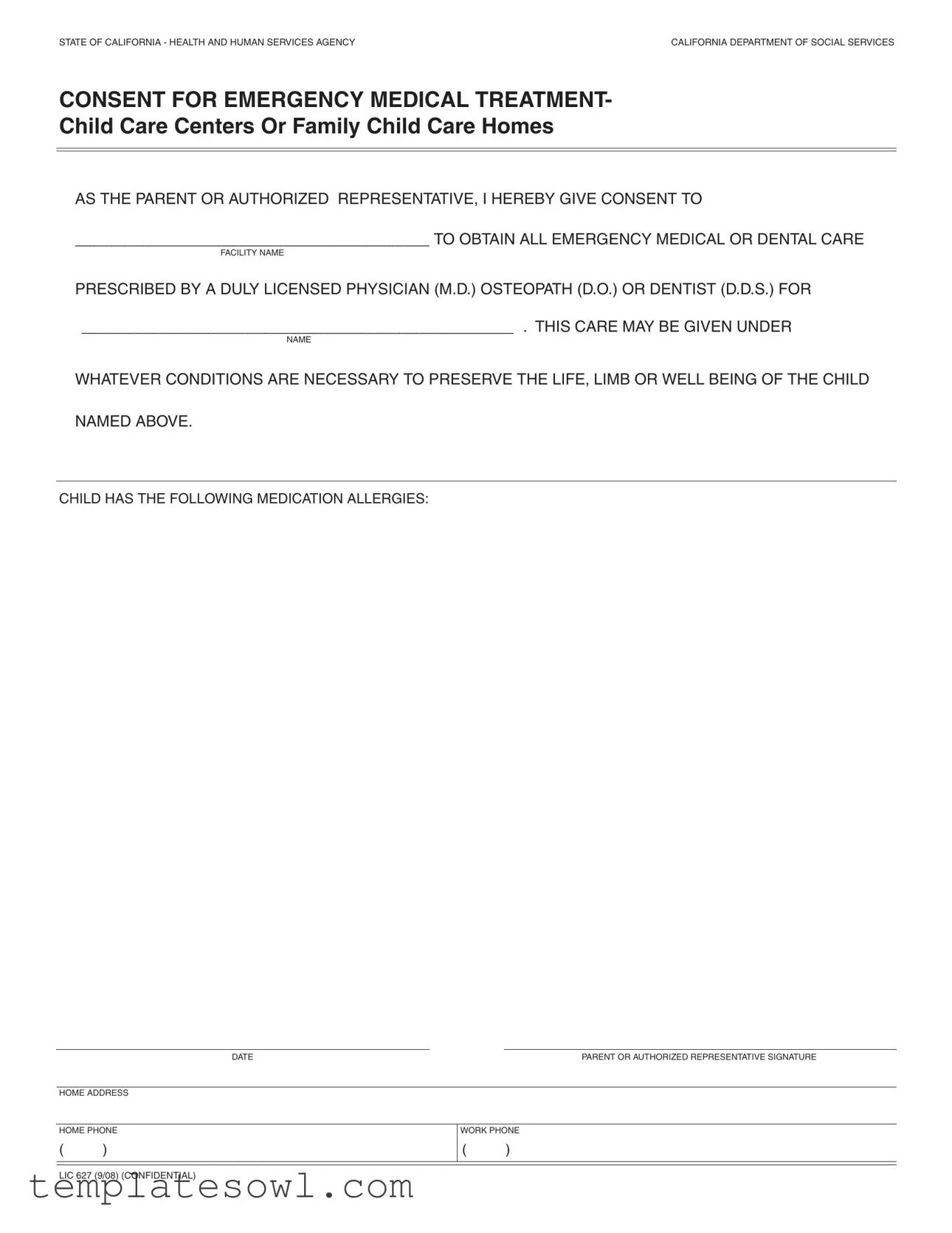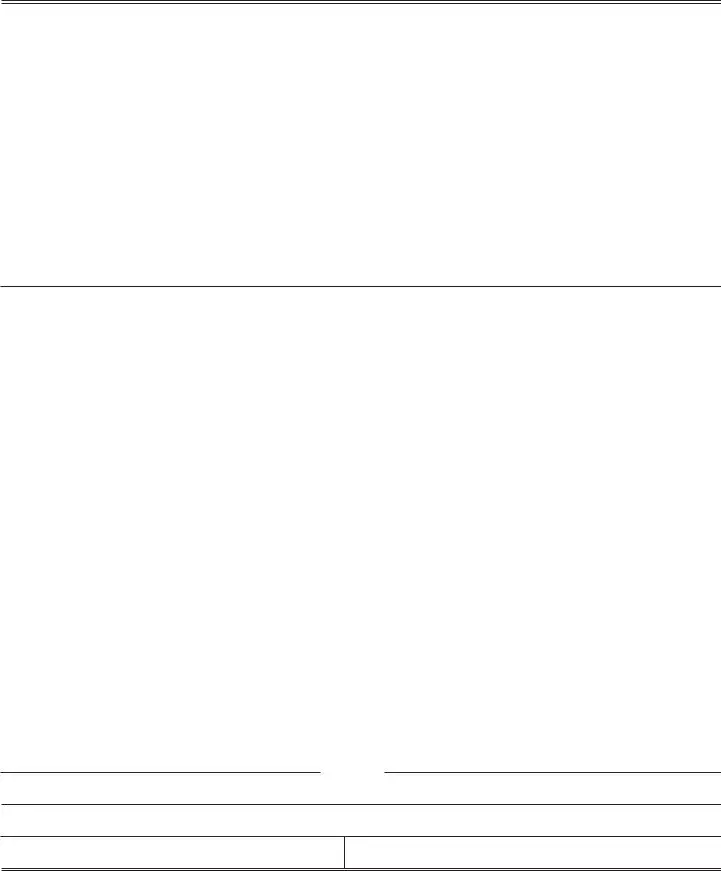What is the purpose of the LIC 627 form?
The LIC 627 form is a consent document that allows parents or authorized representatives to give permission for emergency medical treatment for children enrolled in child care centers or family child care homes. This ensures that childcare providers can quickly obtain necessary medical care in emergency situations, preserving the health and safety of the child.
Who needs to sign the LIC 627 form?
The form must be signed by a parent or an authorized representative of the child. This individual is responsible for making medical decisions on behalf of the child and is typically a legal guardian or someone designated to act in the parent’s stead.
What information is required on the LIC 627 form?
Key information needed on the LIC 627 form includes the name of the child, the name of the health facility or physician designated to provide care, and the signatures of the parent or authorized representative. Additionally, it is essential to list any medication allergies the child has, ensuring that medical providers can avoid potentially harmful treatments.
Is the LIC 627 form confidential?
Yes, the LIC 627 form is marked as confidential. This confidentiality remains paramount, as it contains personal health information regarding the child that should be protected in accordance with privacy regulations.
When should the LIC 627 form be completed?
The LIC 627 form should be completed before the child begins attending a child care center or family child care home. It is advisable to have this information ready, so caregivers can act swiftly in case of an emergency.
What happens if I don’t complete the LIC 627 form?
Failure to complete the LIC 627 form may delay necessary medical treatment in an emergency. Child care providers may not be authorized to seek medical attention without prior consent, potentially placing the child's health at risk.
Can I revoke consent after signing the LIC 627 form?
Yes, consent can be revoked after signing the LIC 627 form. However, it is crucial to communicate this decision promptly to the child care provider, ensuring they are informed and can act appropriately based on the most current instructions.
Where should I keep the completed LIC 627 form?
The completed LIC 627 form should be kept in a safe and accessible location. It is wise to provide a copy to the child care provider so they have it readily available in case of an emergency.
Are there any fees associated with obtaining the LIC 627 form?
No fees are associated with completing the LIC 627 form, as it is a standard form provided by the California Department of Social Services for use in child care settings.
Can I add additional information to the LIC 627 form?
While the LIC 627 form has specific fields that must be filled out, if there is additional information you feel is important—such as chronic health conditions or emergency contacts—it's advisable to discuss this directly with the child care provider to ensure all relevant information is available for emergencies.

